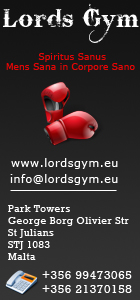Posts Tagged ‘Bantamweight’
The Great Little Champion From Logan Square
Johnny Coulon
The Great Little Champion From Logan Square
By Enrique Encinosa
I met Johnny Coulon in early 1965. I was fifteen and Coulon was seventy-six. At first glance he did not impress. The Johnny Coulon that shook my hand that cold day in Chicago, was a milk-white little man who wore a white shirt, dark pants and a bowtie. He had eyes like berries on a bush and his voice was soft and friendly.
I was a young kid in love with boxing and Johnny Coulon fit me like an old shoe. The little guy was not only a topnotch trainer, but living boxing history. He had known every heavyweight champion since the Great John L. Sullivan, had been bantamweight champion of the world, had trained hundreds of fighters and was a revered celebrity in Chicago during the sixties. At seventy-six he could leave a ring by jumping over a top rope, landing softly on his feet. He celebrated a birthday by walking the length of the gym on his hands.
He was born in Canada in 1889, but grew up in turn of the century Chicago, where as a prelim fighter he became known as “The Cherry Picker from Logan Square.” He turned pro at sixteen and was champion at twenty-one. His career, managed by his father, Pop Coulon, stretched from 1905 to 1920. The hall-of-famer is listed as losing only four times in ninety-seven fights, but he claimed to have fought over three hundred pro fights.
“A lot of my fights never made the record books,” he told me, as I began pumping him for information on boxing lore, “I fought in small shows all over Illinois and Indiana. I fought in Terre Haute four or five times and not one of those fights made the record books. I also fought in Gary, South Bend, Streator and other places, like county fairs. Not even half of my fights are listed. There was a tavern near Logan Square that had a ballroom in the back and they used to run weekly shows. I think they charged twenty cents at the door and the place held maybe three hundred. My average purse for those fights was four dollars, but back then you could live on ten dollars a month. I fought at least twenty times in that ballroom, in 1905 and 1906, and not one of those fights ever made the books. During those two years I also toured eight weeks with a circus, fighting all comers for four rounds. I was paid eight dollars a fight. I had maybe twenty five fights in those eight weeks. Not one made the record books. ”
Johnny Coulon fought all the top little men of his time. He traded leather with Pete Herman, Jim Kendrick, Frankie Burns, Kid Williams, Frankie Conley, Harry Forbes and Kid Murphy. A good fighter he beat was Charlie Goldman, a tough bantam who went on to become Rocky Marciano’s trainer. Coulon won the crown from Jim Kendrick in nineteen rounds . A fighting champion, the record books tell that in 1912 Johnny Coulon beat two top contenders, Frankie Conley and Frankie Burns, in two twenty rounders that both went the distance. The Cherry Picker packed forty rounds of fighting in fifteen days.
“There were a lot of tough fighters in my time,” he once told me, “when I fought Kendrick I was sick, weak with a stomach ailment. When Conley fought me, he sprained his wrist real bad, but kept fighting even though he grunted in pain every time he hit me. Conley was tough but he was made to order for my style. I would jab him to the body, jab him to the head and use the jab to set up the right hand. And Conley was a sucker for the right hand. I was not a great puncher, but I would time him coming in and shoot the right hand down the middle and I would score every time.”
The gym was located at 1154 E. 63rd Street, on the South Side of Chicago. The L Train rumbled past the third floor windows. There was a single ring, a half dozen bags of different types, a locker room and clean showers. Johnny and his wife, Marie, ran a clean pugilistic emporium. Mrs.Coulon did not allow cursing or smoking . Visitors were allowed as long as they behaved themselves in a proper manner. Sonny Liston was expelled on his first day at the gym, then apologized and became a very good friend of Johnny and Marie.
The gym, which opened during the twenties, had been host to boxing legends. Dempsey, Louis and Marciano had sparred within these walls. Ali would often used the gym to keep himself toned during his exile years. I found myself sparring in a ring where Sugar Ray Robinson had once trod.
At the time I embarked on a modest amateur career, the well known fighters at Coulon’s included former junior welterweight champion Eddie Perkins (74-20-4) who was managed by Coulon, and Light-heavyweight contender Allen Thomas. Perkins, a steelworker, was a clever little boxer with a good chin. Thomas was a southpaw who fought Mauro Mina, Bob Foster and several other topnotchers. Other pro leather slingers included Ben Black, who lost to Cleveland Williams, and Fred Askew, who was one of George Foreman’s early victims.
At one end of the gym, in the southern side of the room, where long windows faced the elevated tracks of the L Train, Johnny Coulon had his personal office. In Christmas, holiday postcards framed the doorway. Among the cards there were best wishes from European royalty, senators, movie producers, actors and writers. Coulon knew everyone. Ernest Hemingway had visited Coulon’s and insisted on sparring with the local pugs. LeRoy Neiman had sketched boxers working out. A cult movie of the sixties, “Medium Cool,” filmed scenes at the gym, where Coulon briefly appeared, a tiny old man captured forever on celluloid.
Johnny Coulon was a special man not only for his fame as a former champion and first rate trainer. In a brutal trade he was a man of ethics. When a local community center was about to close up for lack of funds, the one man who stood to benefit from such a closure was Johnny Coulon. He knew that a dozen fighters, seeking a new gym would increase his monthly revenue of dues. Instead of ignoring the situation and waiting for new clients, Johnny Coulon sat in his office for hours, calling members of the chamber of commerce, aldermen, reporters. Within hours, Johnny had politicians and blue blood socialites donating money to the center. Coulon even wrote a personal check and helped promote an amateur boxing show and a benefit dinner to raise funds for the competition. The community center stayed open. Such a gesture was not unusual for the Cherry Picker. The night he won the crown from Kendrick, Johnny donated a thousand dollars, a large sum of money in those days of nickel beer, to the Working Boys Home of Chicago.
When Johnny Coulon opened his gym, in the early twenties, the neighborhood had been blue collar Irish and Polish. By the time I joined the gym, the area was pure black ghetto. The four or five of us from other ethnic backgrounds commuted from the suburbs, a concept that never thrilled our parents. To Coulon, ethnic or racial background did not matter. He treated everyone the same, with a Victorian courtesy dating back to the turn of the century. As a result, when the Chicago race riots of the sixties burned down and looted whole city blocks of the South Side, Coulon’s gym was neither burned nor ransacked, a true symbol of respect. Johnny was not only “color blind,” he could boast of having been a close friend of Jack Johnson., had frequented Johnson’s inter-racial restaurant the “Café De Champion,” and had even been a pallbearer at the great champion’s funeral.
“Johnson,” he once told me, “was a very smart man. The papers said some horrible things about him, and he was very hurt by the whole situation, although he put on this public display of not caring., but he did. His first wife was pretty and a real nice lady. She killed herself. The second wife was a working girl from a bordello. I liked him but I did not approve of his lifestyle. He smoked cigars and drank wine and champagne. An athlete should not do those things.”
“His restaurant, “Coulon described, “was known as the “Café Du Champion, ” and it was located on thirty-first street. It was not open for long, because Johnson had all the legal problems and his first wife, Etta, killed herself on an upstairs apartment. The Café was impressive. It had several rooms, expensive gold plated cuspidors, burgundy wallpaper and green silk curtains. The food was very good, mostly steak and chicken dishes served on good china. He had entertainment, from local talent and early jazz bands to violin players. The Cafe was like Johnson, gaudy and fun. You know, back in those days almost everyone dressed in dark suits, but Johnson would have tailors make him suits in bright colors, like mustard or mint green. They were expensive suits and they looked sharp on him. He was a dandy, but I felt sorry for him. He had demons.”
Coulon was also known for a trick he performed for celebrities. Tacked on the gym walls were several portraits of heavyweights like Primo Carnera and Sonny Liston attempting to lift the 110 pound former champion. It was a clever trick, for as a giant would attempt to lift him, little Johnny would place a hand on the man’s neck and press gently. Whatever nerve he touched was enough to incapacitate the lifter. Men twice Johnny’s size attempted to lift him, but always failed. Although I asked him where he had learned this unusual skill, he never said, but did tell me that he had toured with a vaudeville group, where he made a profitable living giving boxing exhibitions and daring members of the audience to lift him on the stage.
Nothing good lasts forever. The little Cherry Picker from Logan Square died on October 29, 1973. I was just married and living on the East Coast, so I missed the funeral. An old pug told me that Johnny was buried with honors, at a funeral attended by writers, senators, society people and a lot of men with broken noses and mashed up ears. The pallbearers did not strain much lifting the coffin with the remains of the little champion, but as the box disappeared into the snow, tears ran down scarred faces.
Boxers of Yesteryear: Johnny Coulon
Although, Johnny Coulon is by and large forgotten by the younger generation of boxers and fans of the sport, in his time he was a living legend, with a professional career spanning 15 years (1905 – 1920). Coulon was diminutive in size but possessed intelligence, speed and fast hands; in 97 recorded bouts, he is listed as losing only four times (although he claimed as having had as many as 300 bouts). During his career Johnny Coulon won the Bantamweight Championship of the World, the 115 Pound Championship of the World and the Paperweight Championship of the World.
Johnny Frederic Coulon was born in Toronto to American parents Emile Eugene Coulon (1857–1911) and Sarah Loretta Waltzinger (1857–1923), on the 2nd of February 1989,His parents moved to Chicago a couple of years after Johnny was born, and he grew up in turn-of-the-century Chicago, where, as a prelim fighter, he became known as “The Cherry Picker from Logan Square.” (Also to be known as “The Chicago Spider”) He turned pro at 16 and was champion at 21. His career was managed by his father, Eugene “Pop” Coulon.
Johnny Coulon’s pro debut. From Chicago Tribune 08/26/1906: “Johnny Coulon, the clever amateur bantamweight, will make his apperance as a professional against Danny Goodman.” Also, fromAppleton Post-Crescent, 02/25/1920, “Coulon started at the age of 14. He was an amateur for some time…Johnny showed up at an amateur tourney in Kid Howard’s gymnasium. The Kid looked at the scales when Johnny stepped on and told him he’d better vamoose. But Johnny stuck through derisive laughter, and his dad wanted to bet $100 he could whip any of the other lads. They selected Danny Goodman, who weighed around 110, and Johnny won. Later Goodman was matched with Coulon in Johnny’s first professional fight. Again he beat Goodman. Johnny weighed 98 and Goodman weighed 113.”
Coulon won his first 26 bouts before losing a 10-round decision to Kid Murphy. In a rematch with Murphy in 1908, Coulon reversed the decision and earned recognition as the American bantamweight champion.
After capturing the world title against Kendrick in 19 rounds, he would go on to defend his title against such boxers as Earl Denning, Frankie Conley, Frankie Burns, and Kid Williams.
On the 11th April, 1910, Johnny Coulon defended his world 115 pound paper weight title, with a newspaper draw against Young O’Leary at the Marathon Athletic Club in New York. As with all title bouts in non-decision jurisdictions, the title could only have changed hands if the bout ended via knockout or foul.
It was a surprisingly tough evening for Coulon. Along with having his left eye completely closed by the persistent left jab of the impressive local fighter, he was staggered twice during a “whirlwind” tenth round - first with a right/left combination to the jaw and then with a right just before the bell.
The New York Times write-up giving the local fighter the edge in rounds 2, 6 and 10, with Coulon winning rounds 1, 3 and 9, with the remaining sessions even.
It was one of the fastest exhibitions seen in New York for some time, and the crowded house frequently voiced its hearty approval at the way things were going. O’Leary surprised even his best friends by his good showing, where as Coulon was something of a disappointment for a champion. – New York Times
Coulon is also remembered for another noteworthy feat that of winning two 20-round title matches within a span of 15 days. He defeated Frankie Conley on February 3, 1912, in Vernon, California, and Frankie Burns on February 18 in New Orleans, Louisiana.
He finally lost the World Bantamweight Title, on the 9th of June,1914 - when Coulon went down for a count of eight in the second round and was saved by the bell - Williams stopped him in the third round.
Coulon served in the United States Army during World War I, often instructing soldiers on how to fight. He boxed twice after his service stint and retired from the ring in 1920.
After Johnny Coulon ended his boxing career in 1920, he then hit the vaudeville circuit, during which he made friends with European heads of state, actors, and author Ernest Hemingway.
During his travels he devised a popular trick for his stage act, inviting anyone from the audience to lift him off the ground — no great task, considering Coulon weighed just 120 pounds. Coulon then would place one finger against the volunteer’s neck and ask them to try again, upon which they would inevitably fail.
In 1921, Coulon married Marie Maloney (1892–1984). She never saw him fight professionally, but together they opened Coulon’s Gymnasium on the South Side of Chicago. Marie was the business manager.
“His professional career was over when we met, but together we saw oh so many of the great ones train at our gym down thru the years — men like Jack Dempsey, Gene Tunney, Jim Braddock, Joe Louis, Sugar Ray Robinson, and Muhammad Ali.
Coulon also managed junior welterweight champion Eddie Perkins (74-20-4) and light-heavyweight contender Allen Thomas.
Coulon was not only a topnotch trainer, but living boxing history. He was a close friend of Jack Johnson, had frequented Johnson’s restaurant, the “Café de Champion,” and had even been a pallbearer at the great champion’s funeral. He had known every heavyweight champion since the Great John L. Sullivan, had been bantamweight champion of the world, had trained hundreds of fighters and was a revered celebrity in Chicago during the 1960s. At 76 he could leave a ring by jumping over a top rope, landing softly on his feet. He celebrated a birthday by walking the length of the gym on his hands. Coulon met three Hall-of-Famers in his career: Kid Williams, Pete Herman, and Charley Goldman, who is best known for training Rocky Marciano.
He died at 84 in 1973 in Chicago and was buried in St. Mary’s Cemetery.
Nat Fleischer ranked Coulon as the #6 All-Time Bantamweight; Charley Rose ranked him as the #7 All-Time Bantamweight; Herb Goldman ranked him as the #8 All-Time Bantamweight; Coulon was inducted into Canada’s Sports Hall of Fame in 1955; was elected to the Ring Boxing Hall of Fame in 1965; was installed in the Catholic Youth Organization’s Club of Champions for his contributions to amateur boxing in 1971and the International Boxing Hall of Fame in 1999.
MMA Results: Dream Japan Grand Prix Final
DREAM JAPAN GRAND PRIX FINAL - 2011 BANTAMWEIGHT TOURNAMENT FINAL was held Saturday, July 16, 2011, at the Ariake Coliseum in Tokyo, Japan.
In the main event, DREAM Featherweight Champion Hiroyuki “Streetfight Bancho” Takaya edged out Kazuyuki “Little Hercules” Miyata for a razor-thin split decision victory. The American judge, Matt Hume, scored the fight for the wrestler, Miyata, while the two Japanese judges, Akira Shoji and Hikaru Adachi, gave the nod to Takaya.
Hideo Tokoro hit the pinnacle of his MMA career in his 54th professional fight by winning the Japan Bantamweight Grand Prix. outworking Masakazu Imanari and avoided his lethal submissions en route to winning a unanimous decision and the tournament crown. Both Tokoro and Imanari, as well as the third-place winner, Kenji Osawa, have secured spots in the upcoming DREAM World Bantamweight Grand Prix.
DREAM: JAPAN GP FINAL
{Featherweight Championship}
Hiroyuki Takaya (16-9) won by SD over Kazuyuki Miyata (11-8)
[20:00] - 3 Rounds
[Japan Bantamweight Grand Prix Final]
Hideo Tokoro (30-23) won by UD over Masakazu Imanari (23-9)
[15:00] - 2 Rounds
{Light Heavyweight Championship}
Gegard Mousasi (31-3) won by TKO over Hiroshi Izumi (4-2)
[3:29] - Round 1 - punches
Tatsuya Kawajiri (28-7) won by TKO over Drew Fickett (41-15)
[4:41] - Round 1 - punches
[Japan Bantamweight Grand Prix Third Place]
Kenji Osawa (18-10) won by UD over Keisuke Fujiwara (11-4)
[15:00] - 2 Rounds
Tatsuya Mizuno (9-7) won by KO over Trevor Prangley (23-8)
[4:41] - Round 1 - knee to the body
Marius Zaromskis (15-6) won by UD over Eiji Ishikawa (22-17)
[15:00] - 2 Rounds
Eiji Mitsuoka (18-7) won by UD over Bruno Carvalho (6-2)
[15:00] - 2 Rounds
Bantamweight Tournament Final
The kickoff press conference announcing “The Bantamweight Tournament Final: Winner Takes All”, took place Tuesday morning at The Conga Room at L.A. Live in Downtown Los Angeles. In the main event, Joseph King Kong Agbeko will put his IBF bantamweight title against undefeated rising star Abner Mares. In the bantamweight tournament consolation bout, Vic “Raging Bull” Darchinyan” meets the once defeated Yonnhy “El Colombiano” Perez.
This tournament not only features four of the top bantamweights in the world, but it also features four of the top American boxing promoters in Don King Productions, Gary Shaw Productions, Golden Boy Promotions and Thompson Boxing Promotions. In keeping the tournament to only two fights, the tournament appears as if it will go off without a hitch as opposed to the current “Super Six” beleaguered super middleweight tournament which has faced the challenge of the withdrawal of three of its original six fighters, squabbles over venues and postponements due to injuries.
The bantamweight tournament, even more so than the super middleweight tournament, truly has an international flavor and showcases fighters representing five different continents with Agbeko from Ghana, Mares from Mexico, Darchinyan originally from Armenia but now living in Australia and Perez from Colombia.
Agbeko follows in the footsteps of previous world champions from Ghana including Azumah Nelson and Ike Quartey and appears to be the favorite to win the tournament. At 30 years old, Agbeko is in his prime yet has a wealth of experience as a 12 year pro, turning pro in 1998 and fighting for the first three years of his career in Africa until fighting for the first time in Europe. In 2007, Agbeko fought for the first time in the USA and later that year would go on to win his first world championship, the IBF bantamweight title, with a knockout victory over former titlist, Luis Perez.
Agbeko would go on to successfully defend his belt two times against William Gonzales and Darchinyan. In the second successful defense, Agbeko convincingly beat Darchinyan, who was moving up in weight to challenge Agbeko, by unanimous decision victory. However, just three months following the Darchinyan victory, Agbeko went on to lose his title by unanimous decision to Yonnhy Perez.
The chance for redemption against Perez would have to wait nearly 14 months but once Agbeko was able to exercise his rematch clause, he handily defeated Yonnhy Perez last December to regain his IBF bantamweight title and set up the showdown in the tournament final against Mares. Read the rest of this entry »
“Turba’s Gonna Get Crushed”
By Rio
London - Wednesday, 26th January 2011
Leon ‘Solid’ Williams: “Turba’s Gonna Get Crushed”
Streatham’s Leon ‘Solid’ Williams gets his first outing, under the Frank Maloney promotional banner, when he faces Blackpool based Slovakian Richard Turba at Brentwood Leisure Centre, Essex on Saturday 5th February 2011, on the undercard of Jamie Arthur vs Jason Booth Commonwealth Super Bantamweight title clash.
Williams, ranked #6 in Britain and #77 in the World by BoxRec, is the current BBBofC Southern Area Cruiserweight Champion. Back in October Williams put in a dominating performance to beat former Southern Area Light Heavyweight champion JJ Ojuederie and lift the title by a virtual shutout 99-92 points margin.
Come February 5th Williams will have to put in an equally perfect performance as it seems that Frank Maloney is determined to test his latest signing to the max, in this non-championship bout, by matching him with Turba.
Turba, who has 5-2-1 record, has stopped four of his opponents, including in his last bout forcing another Maloney fighter, Prizefighter Cruiserweight winner Jon Lewis Dickinson, to retire with a broken jaw.
Following a training session, with his new manager and co-trainer Johnny Eames at his Ultrachem TKO Gym in Canning Town, Williams made it crystal clear that he wasn’t fazed at the prospect one iota, “I’ll be up against some guy called Richard Turba, he’s gonna get crushed. It’s my time now.
It’s gonna be a really good fight. I don’t back down so someone’s gonna get crushed and it’s not gonna be me.
It’s just a six rounder to get me ready for my Southern Area title defense. Not sure when that’ll be or who against.
For now I just want to keep busy and build up my record and push for the British, that’s the title I want by the end of the year. That’s my goal.”
Leon ‘Solid’ Williams, against Richard Turba will feature on the undercard of the Frank Maloney promoted Jamie Arthur vs Jason Booth Commonwealth Super Bantamweight title clash at the Brentwood Leisure Centre, Brentwood, Essex on Saturday 5th February 2011.
Also featured on the card will be a six round Super Flyweight contest which pits former British Bantamweight Champion Martin Power against the unbeaten Ashley Sexton.
Commonwealth Gold and Olympic Bronze medalist Heavyweight David Price will be in action against South Africa’s Osborne ‘Big Daddy’ Machimana. In another Heavyweight bout Tom Dallas also gets African opposition, this time in Zambia’s Francis ‘Galagata’ Zulu.
Stoke Newington’s exciting unbeaten Light Middleweight prospect Erick ‘The Eagle’ Ochieng is set to face Canning Town’s Costas Osben.
Belfast Super Flyweight Jamie Conlan gets to pit his unbeaten, in five, record against Exeter’s Lewis Browning.
Malmesbury, Wiltshire’s Welterweight Joe Hughes gets his second outing against the highly experienced Johnny Greaves from East Ham.
In addition Middleweight Johnson McClumpha, Light Welterweight Karl Place, Middleweight Tony Hill, Super Bantamweight Lewis Pettitt, and Welterweight Martin Welsh are also featured, against yet to be named opposition.
Tickets, priced £30, for the event are available now direct from Leon Williams. Call Team Solid Ticket Hotline on 07538 150367 or buy on-line at www.tkoboxoffice.com
PHOTO
Leon Williams at the Ultrachem TKO Gym in London
PHOTO CREDIT
Gianluca (Rio) Di Caro
JustListen2This Publicity & Promotion
London, UK & Philadelphia, USA









